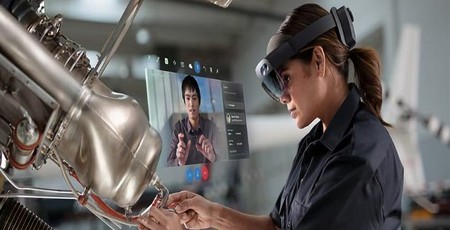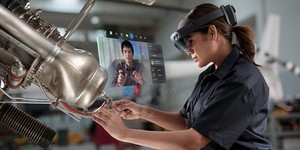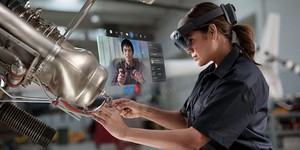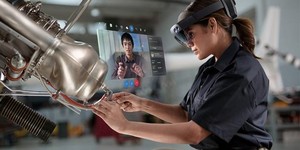
Microsoft has announced the second-generation iteration of its augmented reality HoloLens system, imaginatively dubbed HoloLens 2, alongside a revamped Kinect sensor platform which aims to make the transition from gaming to enterprise use.
First unveiled alongside the news that Windows 10 would be a free update for its first year, the HoloLens platform was designed to revolutionise work and play. Based on the concept of augmented, rather than virtual, reality, the system overlaid computer-generated imagery on the real world while also scanning the environment and the user's hands to allow for meaningful interaction. Pricing for the initial developer-focused build, however, was high at a whopping $3,000 (around £2,295 excluding taxes), and issues with a lack of third-party support and an extremely narrow field of vision for the computer-generated imagery meant that a commercial release failed to follow.
Now, Microsoft is back with HoloLens 2, claimed to be an improvement over the original in every possible way. 'Since the release of HoloLens in 2016 we have seen mixed reality transform the way work gets done,' Microsoft's Julia White somewhat overenthusiastically claims. 'We have unlocked super-powers for hundreds of thousands of people who go to work every day. From construction sites to factory floors, from operating rooms to classrooms, HoloLens is changing how we work, learn, communicate and get things done.
'Our customers asked us to focus on three key areas to make HoloLens even better. They wanted HoloLens 2 to be even more immersive and more comfortable, and to accelerate the time-to-value.'
The revamped design features a doubled field of vision while retaining the same resolution of 47 pixels per degree, Microsoft claims, alongside a new time-of-flight depth sensor which allows for 'direct manipulation of holograms with the same instinctual interactions you’d use with physical objects in the real world.' The new design also packs eye-tracking sensors, missing from the original, iris recognition for Windows Hello login and improved comfort, the company claims.
These shiny new features come at a cost, of course: HoloLens 2 is set to be even more expensive than the original, with the device being launched at $3,500 (around £2,675 excluding taxes) - though, this time, the company is claiming it is 'ready for business' rather than a development kit. To support that claim, Microsoft is offering a bundle with HoloLens 2 hardware and a subscription to the Dynamics 365 Remote Assist augmented reality communications platform for $125 per user per month (around £95 excluding taxes).
At the same time as unveiling the HoloLens 2, Microsoft made the surprise announcement that it was bringing the Kinect depth sensor platform back in the form of the Azure Kinect Developer Kit - the release promised by last May's announcement of Project Kinect for Azure. The hardware kit, which is considerably smaller than any previous Kinect release, includes a time-of-flight depth sensor, high-definition camera, and a seven-microphone 360-degree array, with pre-orders open at $399 (around £305 excluding taxes).
More information on HoloLens 2 and the Azure Kinect DK can be found on White's blog post.

MSI MPG Velox 100R Chassis Review
October 14 2021 | 15:04








Want to comment? Please log in.